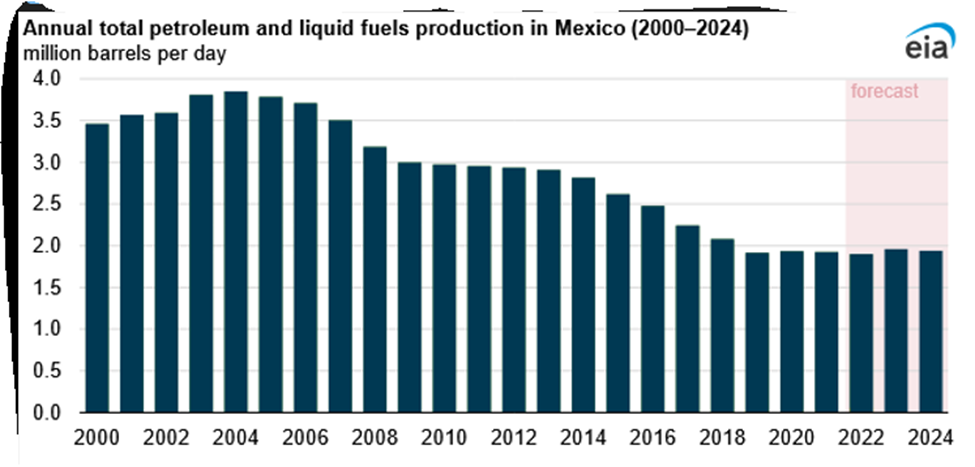An article posted by Rystad Energy on April 2, 2025, entitled, “State Control Returns to Mexican Energy Production” is a reminder that government intervention in the economy continues outside of the US. Rystad Energy is an independent energy consulting service and business intelligence provider.
The energy sector privatization reforms enacted through the legislative process by former Mexican President Enrique Peña Nieto in 2013 are being reversed by Mexican President Claudia Sheinbaum in 2025. “. . . Nieto’s government promised that inviting private companies into oil, gas and electricity production would modernize infrastructure, reduce costs and boost efficiency.”
The article describes three actions taken by President Claudia Sheinbaum to transform their energy sector. It was announced on the 87th anniversary of the government confiscation of oil companies private property that created Petróleos Mexicanos (Pemex) in 1938:
- Mexico is reversing its 2013 energy reforms by strengthening state-owned entities like Pemex and CFE and prioritizing their electricity generation over private producers, including those using renewable energy.
- Independent regulatory bodies are being eliminated, with their responsibilities shifting to government ministries, raising concerns about oversight and potential political interference.
- While President Sheinbaum expresses support for renewable energy, the new laws place CFE in the lead for this transition, creating uncertainty for private renewable energy firms and potentially slowing innovation.
Pemex—the government oil company—owns and operates crude oil and natural gas drilling, pipelines, refineries and sells refined petroleum products. CFE is the Federal Commission of Electricity. “CFE’s role in electricity generation has been reinforced, with new rules ensuring that at least 54 percent of Mexico’s electricity must come from the state utility, regardless of market competition.”
. . . electricity from private producers—including those using renewable energy—is now second in line, meaning the government prioritizes CFE’s power supply over cleaner, cheaper alternatives. These changes dismantle the competitive energy market created in 2013, ensuring the state holds the reins, no matter the cost.
Mexican renewable energy sourced from hydro, solar and wind are impacted by the government lead transition from carbon based fuel sources:
. . .under these new laws, CFE—not private companies—will lead this transition. While this maintains state control, it may slow innovation and investment, as private renewable energy firms now face uncertain regulations and reduced incentives.
. . .this free-market approach clashed with the nationalist vision of his (Nieto’s) successor, former President Andrés Manuel López Obrador (AMLO), who saw foreign involvement as a threat to Mexico’s sovereignty.
President Sheinbaum was tutored by President AMLO on how to govern. The lesson of government intervention in the economy appears to be clearly understood.
Mexico’s annual crude oil production has decreased from roughly 3.75 million barrels per day (MMBPD) in 2004 to approximately 1.95 MMBPD in 2024 according to information from the US Energy Information Agency. Many causes for this decreased annual production are not investing in more oil drilling onshore and offshore, maintaining oil refinery equipment, federal government majority ownership of Pemex inflicts higher operating cost, government personnel decision making involved, etc.

Government intervention here discourages some level of free market business operation. Ludwig von Mises would be choking on his Mexican meal when seeing these crude government economic intervention actions:
On the one hand, the government argues that restoring state control protects Mexico’s resources from foreign exploitation and ensures that profits benefit Mexican citizens. On the other, outside observers note that removing competition and transparency could lead to inefficiencies, increased costs and an unreliable energy supply.

















